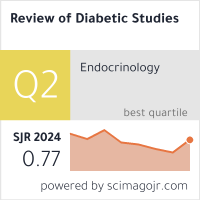Recent Trends In The Diagnosis And Management Of Oral Pathologies: An Evidence-Based Approach
DOI:
https://doi.org/10.1900/hhdvvb96Keywords:
Oral Pathologies; Evidence-Based Dentistry; Molecular Diagnostics; Minimally Invasive Therapy; Digital Health in Oral MedicineAbstract
Oral pathologies encompass a wide spectrum of conditions ranging from common inflammatory and infectious diseases to premalignant and malignant lesions, each presenting diagnostic and therapeutic challenges that demand precision and innovation. Over the past decade, significant advances in biomedical sciences, imaging technologies, and molecular diagnostics have redefined how oral diseases are identified and managed. This paper reviews recent trends in evidence-based approaches for the diagnosis and management of oral pathologies, with emphasis on early detection, minimally invasive interventions, and integration of digital health technologies. Diagnostic modalities have progressed beyond conventional clinical and radiographic assessment, incorporating adjunctive tools such as cone-beam computed tomography, optical coherence tomography, and salivary biomarker analysis, which provide greater sensitivity and specificity in identifying pathologies at an earlier stage. Advances in molecular diagnostics, including next-generation sequencing and liquid biopsy techniques, have further enabled the detection of genetic and epigenetic alterations associated with potentially malignant disorders and oral cancers. These innovations are contributing to risk stratification and personalized treatment planning. Management strategies for oral pathologies are shifting towards less invasive, patient-centered interventions supported by robust clinical evidence. Regenerative medicine, particularly the use of stem cell-based therapies and bioactive scaffolds, is emerging as a promising approach for managing oral mucosal defects, periodontal diseases, and maxillofacial bone loss. Pharmacological advancements, including targeted drug delivery systems and biologics such as monoclonal antibodies, have improved therapeutic outcomes while minimizing systemic side effects. Moreover, the adoption of minimally invasive surgical techniques, laser therapy, and photodynamic therapy has broadened the spectrum of conservative yet effective treatment options. Importantly, digital health technologies are reshaping oral healthcare delivery. Artificial intelligence-assisted diagnostic platforms, teledentistry, and electronic health record integration are enabling real-time decision-making, remote patient monitoring, and continuity of care. These innovations are not only enhancing diagnostic accuracy but also addressing disparities in access to oral healthcare services, particularly in underserved populations. The convergence of evidence-based clinical practices, technological innovations, and translational research underscores a paradigm shift in the diagnosis and management of oral pathologies. This review highlights how the incorporation of advanced diagnostic tools, minimally invasive therapies, and digital solutions can improve patient outcomes while fostering a more preventive and personalized model of oral healthcare. The findings reinforce the importance of continuous adaptation to evolving evidence in guiding clinical decision-making and ensuring optimal standards of care in modern dental and oral medicine practice.
Downloads
Published
Issue
Section
License

This work is licensed under a Creative Commons Attribution-ShareAlike 4.0 International License.


